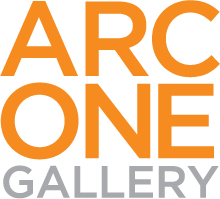AVAILABLE WORKS
EXHIBITIONS
CV
NEWS
As one investigates Desmond Lazaro’s artistic journey, much of it is through map-making – exploring both his personal mapping (which has been a complex one), but one that has also transcended into the journeys of explorer’s, star maps and the wider cosmos, he continually looks into how we reimagine the universe within our own microcosmic journey.
Desmond Lazaro’s work reinvents miniature painting, the tradition he was trained in. His is a boundary-pushing art that makes this traditional craft seem especially current. Born in Leeds in 1968, Lazaro came to India in 1990 to study at the art school of Baroda. There, he became obsessed with the miniature paintings of Rajasthan and went to train for twelve years in Jaipur under late master painter Bannu Ved Pal Sharma. Lazaro chose to adopt a craft that is alien to British art education and to deploy it to describe the world around him. He has since worked in the pichvaii and miniature painting techniques, and also wrote (and published) doctoral thesis on the topic. His approach is learned and meticulous. Lazaro uses handmade paper and creates his own pigments from grinding semi-precious stones or natural elements. But by opting for present-day subject matters he disrupts the conventions of miniature painting.
In 2016, Lazaro started a series titled, ‘The In-Coming Passengers’, opening up new lines of enquiry. This body of work primarily focused on the artist’s family history and the reworking of official records and found material. This archival investigation first started in 2013 with works that reconfigure the baptism certificate of Peter Lazaro, the great-grandfather of the artist who lived in Madras.
Working from an intimate personal space that explored his own journey, Desmond went on to investigate early explorers inspired by Buckminster Fuller's Dymaxion Maps which takes a non-hierarchical approach to geography where there is no up or down, no North or South. Lazaro's work includes re-imagined Dymaxion Maps and their three-dimensional rendering in the form of an icosahedron mobile.
From there, having spent time in Dunhuang (Western China) at the Margao Buddhist Cave site where the oldest star map (The Dunhuang Star Atlas) was discovered in 1906. The map illustrates star constellations and cloud divination in equal measure. And much like the Dunhuang Star Atlas, this work offers both a mythological and empirical view of the heavens, upon which many cultures would later base their calendars systems.
In the current body of works in which he is delving deeply in astronomy and cosmology, he was particularly interested in how early star maps represented the heavens as a series of concentric circles, each circle being a planetary orbit. The choice of colour within these circles may seem random, but clearly the artist was making a relationship between representation and symbolism. Studying, referencing early medieval manuscripts illustrating geo (earth) centric view of the heavens he found each concentric circle represented a visible planet. According to Hermes, the Greek messenger of Gods, the earthly (metal) pigment colours not only symbolize the seven visible planets but are in fact its tangible form.
For an artist whose primary ingredient has been colour, specially given the fact that he grinds his own pigment – the combination of his ongoing research into planetary systems bring together two forces that Desmond Lazaro personal cosmology orbits within!
The artist lives and works between Australia and Pondicherry.





